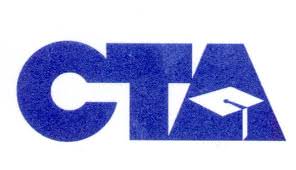Analysis: The California Teachers Association claims 310,000 members. Here’s the breakdown for every local affiliate
Mike Antonucci | January 29, 2020
Your donation will help us produce journalism like this. Please give today.
Mike Antonucci’s Union Report appears weekly at LA School Report.
 The California Teachers Association is “310,000 members strong,” according to its website. But it’s difficult to track that number over time, or assess its impact on California school districts, because our only sources of information have been the union’s public pronouncements.
The California Teachers Association is “310,000 members strong,” according to its website. But it’s difficult to track that number over time, or assess its impact on California school districts, because our only sources of information have been the union’s public pronouncements.
Until now.
Culled from figures present in CTA internal documents, I have compiled a table with the membership numbers for each of 981 local affiliates as they stood at the start of the current school year, with the same figures for the start of the 2018-19 school year for comparison. These are active members, who are those currently working in California’s public schools. CTA also has a number of retired, student and associate members, not included here.
Overall, the union had 304,349 active members as of Aug. 31, 2019. This was a loss of 22,818 members from the previous year. The bulk of the loss, almost 19,000 members, was due to the departure of the California Faculty Association from CTA last June.
United Teachers Los Angeles, which is by far CTA’s largest local, added 143 members. Other large locals with membership growth included the Fresno Teachers Association (40 members), Elk Grove Education Association (37), San Bernardino Teachers Association (34) and Sacramento City Teachers Association (40).
Others did not fare as well. The San Diego Education Association lost 108 members, United Educators of San Francisco lost 181, Teachers Association of Long Beach lost 54 and the Oakland Education Association lost 361.
Certainly the first full year after the U.S. Supreme Court’s Janus ruling had a negative effect. The decision ended the public-sector union practice of charging representation fees to nonmembers. Heightened teacher activism had mixed results. UTLA’s six-day strike resulted in membership growth, but Oakland’s seven-day strike led to a 12.2 percent loss.
With as much attention as we pay to CTA and its big-city affiliates, it’s important to note that almost half of CTA’s locals have fewer than 100 members. Seventeen have only one member. These small locals make up just 5.1 percent of CTA’s membership, but they accounted for 11.6 percent of the state union’s membership losses this past year, once we remove the faculty association’s unique departure from the equation.
Most locals had modest swings one way or the other, and local conditions may account for an acceleration in either direction. It will take more years of similar data to evaluate the presence of any trends, assuming I will still be able to get my hands on such numbers in the future.